Specific tests performed in our clinic
At our clinic, specific tests for the diagnosis and treatment of hearing loss, balance disorders, tinnitus and other ENT disorders are meticulously performed. With our comprehensive diagnostic tools such as hearing tests, vestibular evaluations and endoscopic examinations, we offer accurate diagnosis and personalized treatment plans.
Take the First Step Now
For more information, contact us
Schedule your appointment or online consultation with Prof. Dr. Mustafa Deniz Yılmaz now. Take the first step in your treatment process and let’s begin your journey to recovery together with personalized solutions.
VNG (Videonystagmography) test battery
Consists of a series of tests used to assess the balance functions of the inner ear and central nervous system. The main tests included in the VNG test battery are:
Tests Used in the Evaluation of Balance:
1. Gaze Test: This test is performed to assess whether the eyes are focused on a specific point and whether there is any deviation from this point. In this way, the presence of nystagmus (involuntary eye movements) is investigated.


- Dix-Hallpike Testi

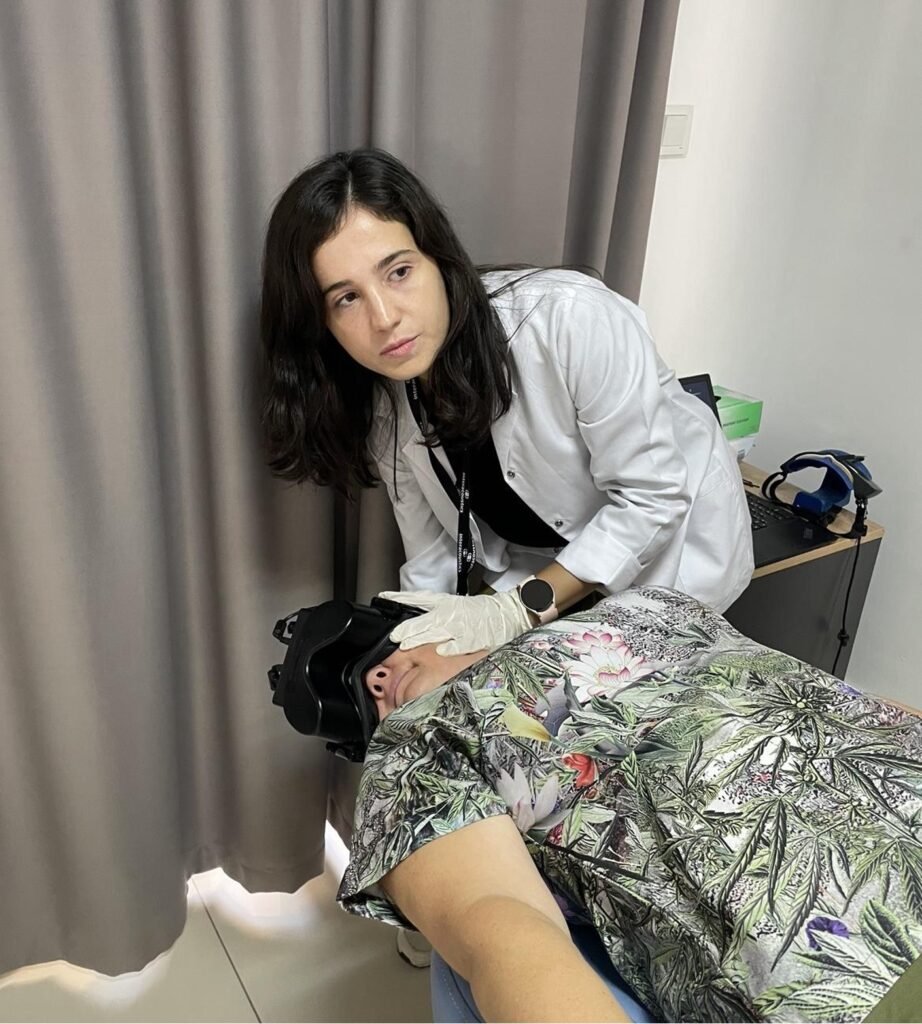
- Supine Head Roll Test
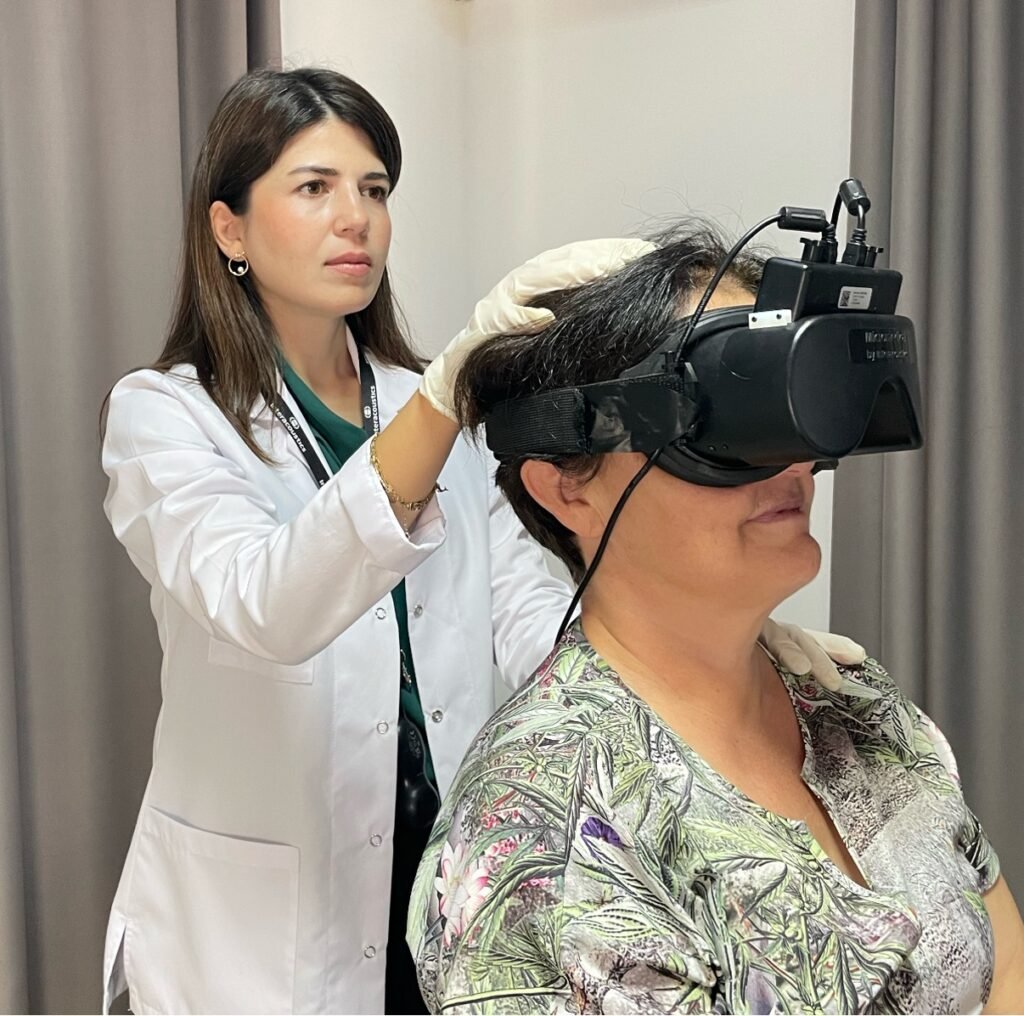

- Deep Head Hanging Test
Purpose of VEMP Testing:
- Saccule Function: The saccule is sensitive to head movements and gravity. VEMP testing is used to measure the function of this structure and the vestibular nerves connected to it.
- Vestibulospinal Reflex: This reflex allows various muscles of the body to respond automatically to maintain balance. VEMP testing evaluates this reflex pathway.
Types of VEMP Testing:
- cVEMP (Cervical VEMP): Measures the contraction responses of the sternocleidomastoid muscle (neck muscle). It evaluates saccule and inferior vestibular nerve function.
- oVEMP (Ocular VEMP): Measures the responses of the lower eye muscles. It evaluates the function of the utricle (another structure in the inner ear that senses balance) and the superior vestibular nerve.

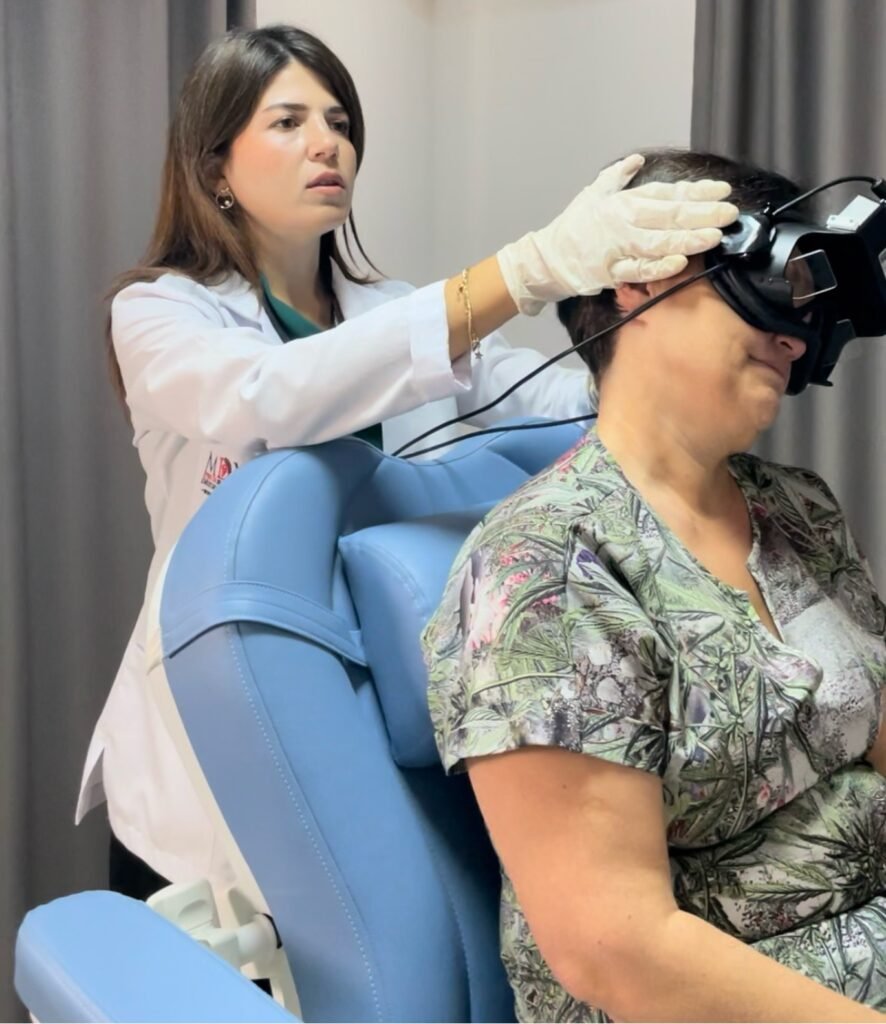

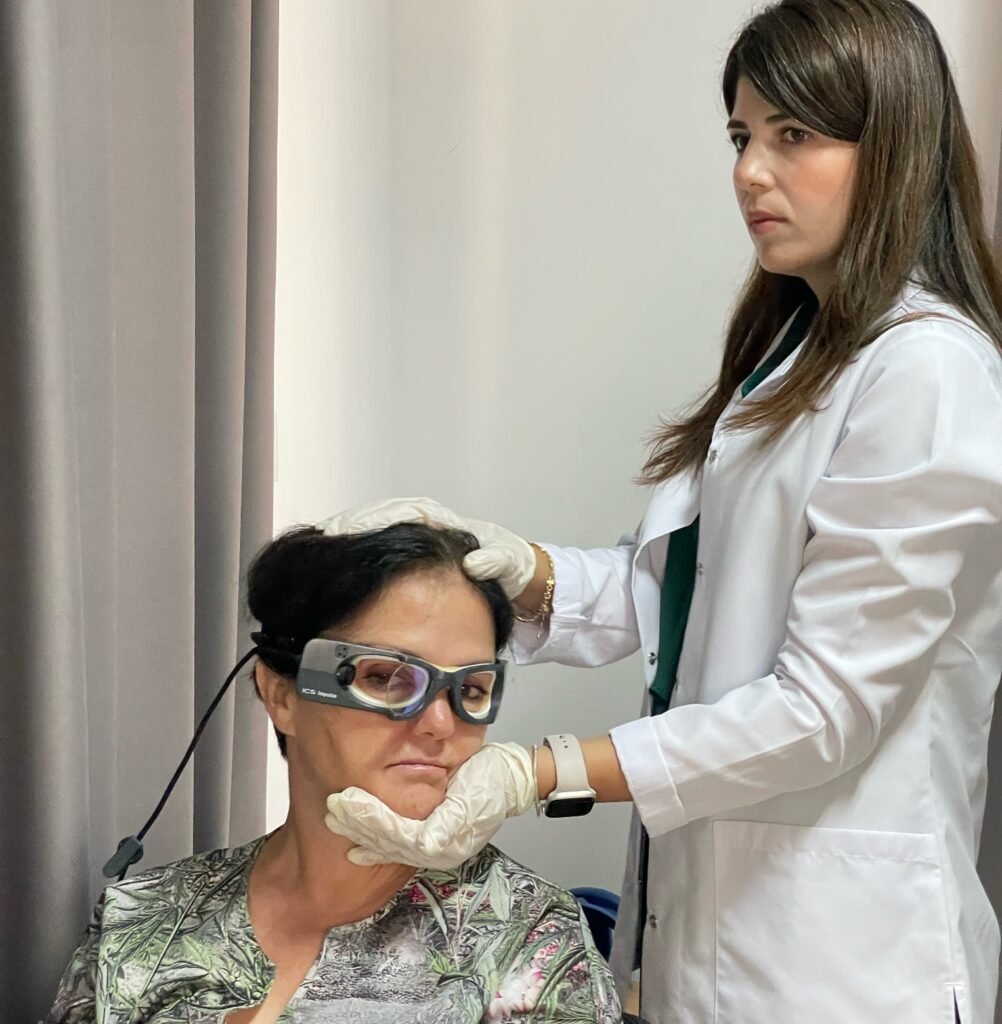
Purpose of the VHIT Test:
- Assessment of the Vestibular-Oculomotor Reflex (VOR): This reflex allows the eyes to remain focused on a fixed point when the head is moved quickly. If the VOR is not working correctly, it may indicate a disorder in the vestibular system.
- Detection of Peripheral Vestibular Disorders: VHIT is used to evaluate peripheral vestibular disorders, especially vestibular neuritis.
Tests Used in the Evaluation of Hearing
1. Pure Tone AudiometryIt is based on the use of pure tones to evaluate the hearing of individuals. In our clinic, pure tone audiometry, speech tests, free-field tests and quiet room are used to accurately determine hearing loss and reach the correct diagnosis and treatment.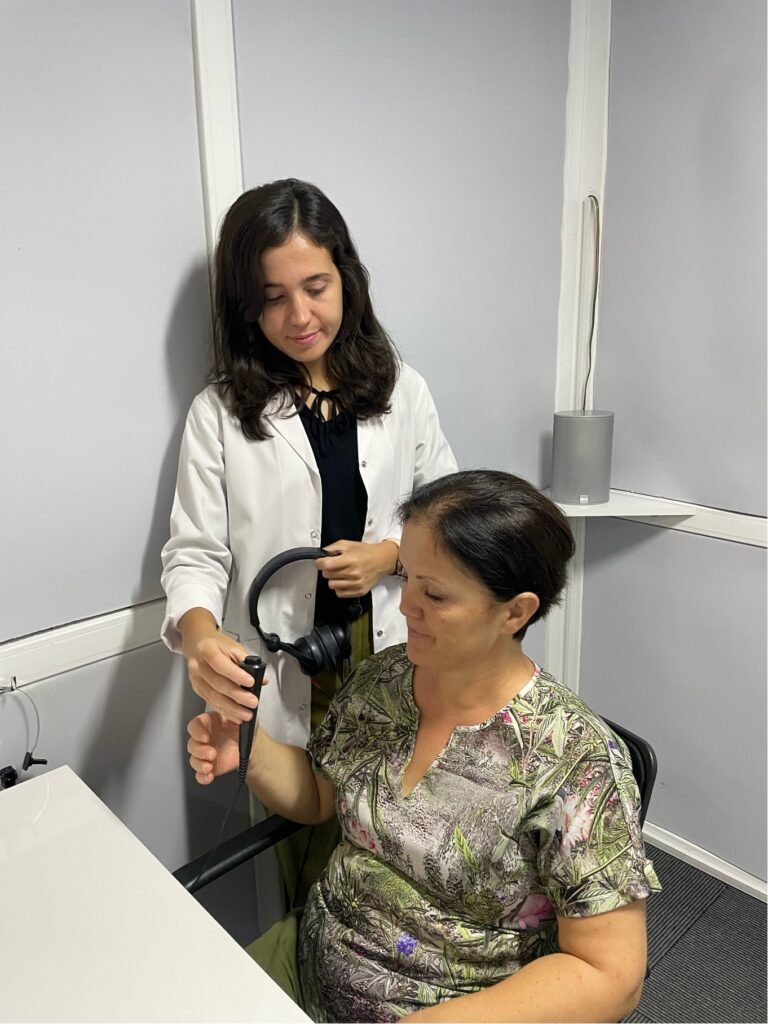

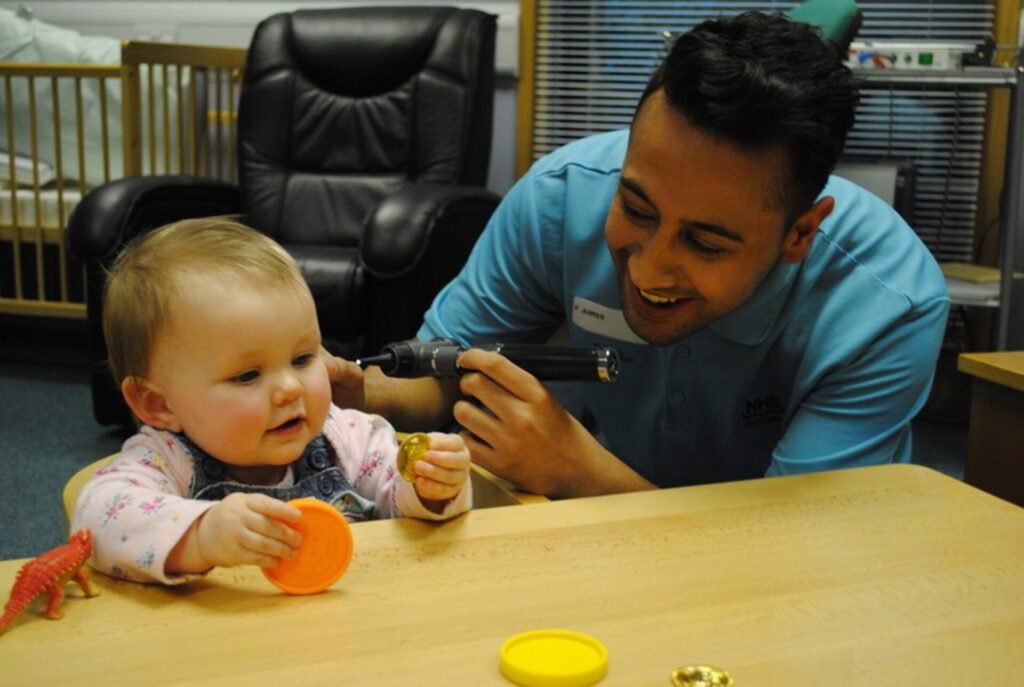

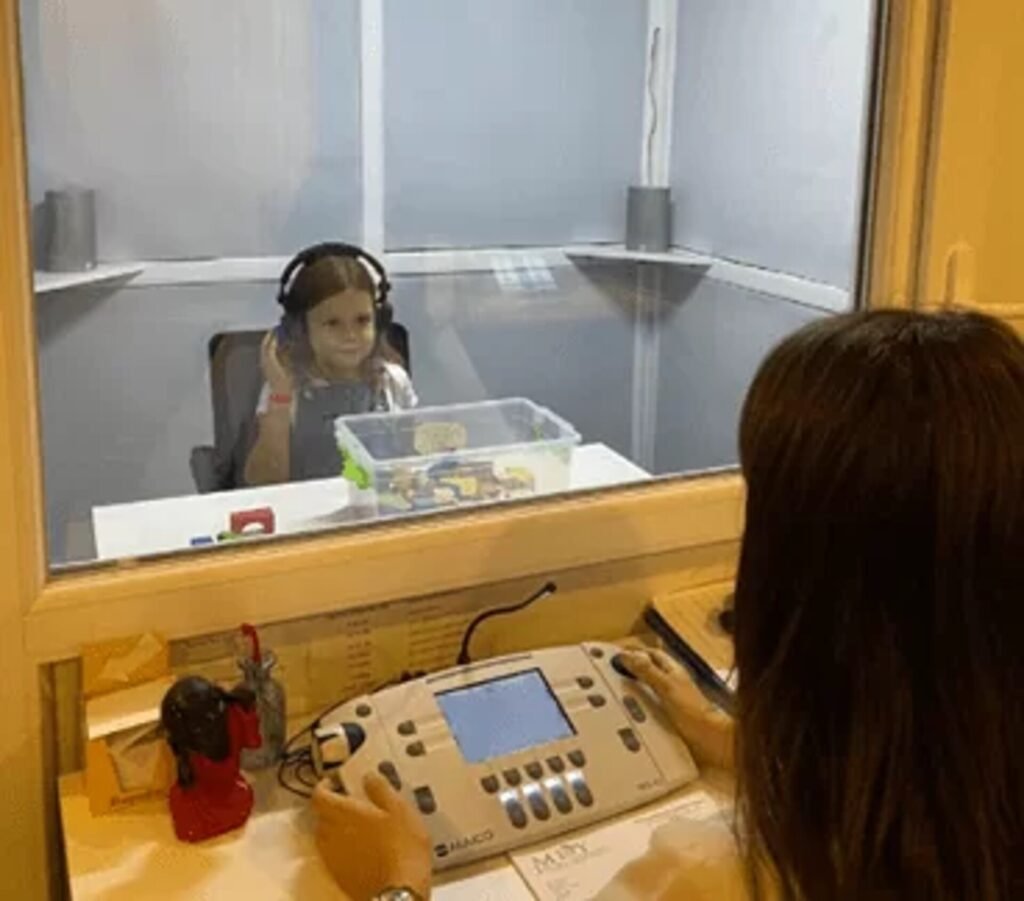
Tests Used in the Evaluation of Tinnitus (Hearing)
In the assessment of tinnitus (ringing in the ears), various audiometric tests are used to determine the characteristics of hearing loss and tinnitus. These tests help to understand the type and severity of tinnitus and its impact on a person’s hearing. Here are the main audiometric tests used to assess tinnitus:

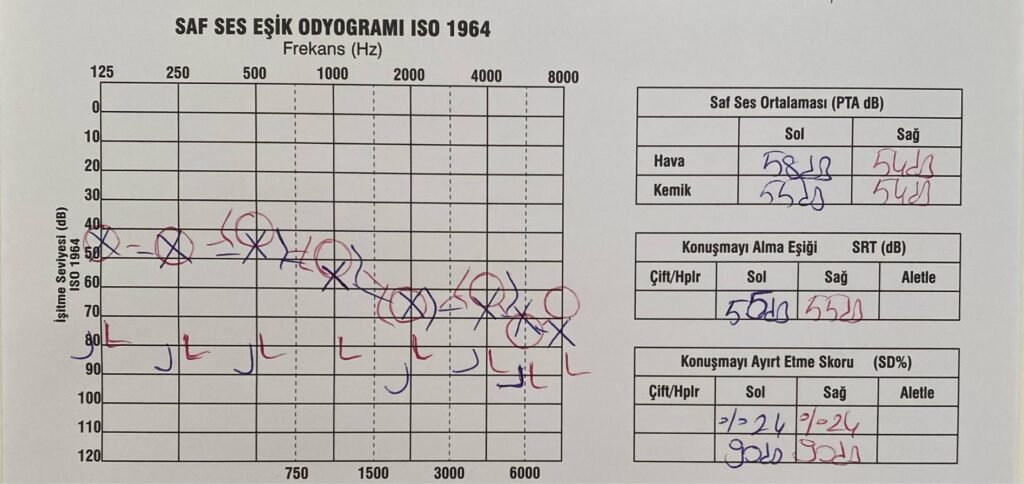


My nephew Ugur Karaer was suffering from empty nose syndrome. We went to every doctor in Istanbul. Finally, God brought us to Dr. Deniz. He performed the surgery successfully and saved my nephew's life. May God bless him.
I don't know how many surgeries I've had myself. But when it comes to children, everything calms down. 🙁 After seeing three doctors for my 2.5-year-old daughter's adenoid and tonsillectomy, we thankfully found Prof. Dr. Mustafa Deniz Yılmaz. His knowledge and patient approach made us believe he was by far the best doctor in this field. His assistant, secretary, the specialist who performed the hearing test... the entire team was extremely professional. Success is a team effort. That's why the whole process went smoothly, and we left satisfied. 💕 May God bless him 🙏🏻
We came from Almaty on vacation, and my son started having ear pain from the very first day. They recommended drops and medications, but nothing helped. We stumbled across a doctor online and decided to take a chance. She turned out to be wonderful, and after the first dose of medication, my son felt better. Within a week, there was no trace of the infection. Special thanks to the translator for her care, understanding, and professionalism.
I was suffering from empty nose syndrome. For those who don't know, I should say that almost all of my nasal tissue was removed. It is a very bad disease. I went to 100 ENT doctors in Istanbul and they couldn't find a solution. Finally, I found Deniz Hoca, who is an expert in this field, and he took cartilage from my rib and performed the surgery and I got better. Thank you very much for everything.
I had a tonsillectomy performed by our doctor, Mustafa Deniz Yılmaz. The surgery went smoothly, and although it's said to be more difficult for adults, I recovered very quickly. I'm so glad I chose Mustafa.
Hello, they told me that my parotid gland needed to be removed. I went to so many doctors that I finally decided on Dr. Mustafa. I am glad I chose Dr. Mustafa. You do not need to look for a doctor, you can choose my doctor with peace of mind without any worries.
I had a nose surgery 9 months ago by Mustafa Deniz Hoca. Both he and his team are always in touch with you before and after the surgery and provide detailed answers to questions. I am very pleased with my nose in terms of aesthetic appearance and health. Thank you and your entire team for everything.
First of all, I would like to thank my instructor Mustafa Deniz Yılmaz for his efforts. I had a nose surgery about 4 months ago. Like everyone else, I had the opportunity to research and compare the videos taken by many people who had this surgery and the perspectives of experts in their field on nose surgeries. I am very happy that I made the right decision and had surgery with my instructor Mustafa. I sincerely recommend my instructor Mustafa to everyone who wants to breathe both aesthetically and healthily and has problems.
I had a nose surgery in February. They never failed to show interest from the moment I entered the clinic until the last moment. No one even understands that I had plastic surgery. Mr. Deniz is one of the best in his field. I recommend it to everyone.
I had a nose surgery 3.5 months ago. The surgery and recovery process went great. There are a few things you should pay attention to after the surgery, they don't affect your quality of life too much. The doctor makes you feel very comfortable about that because it's not as complicated as you think. Other than that, I can breathe easily now, which is the most important thing. Also, Assistant Ayşegül Hanım gets back to you directly at any time of the day, no matter how long it has been since the surgery, if you have any questions. I'm very happy that I chose the right doctor.
I met Dr. Deniz upon the recommendation of another patient. He performed my ear surgery approximately 6 months ago with the diagnosis of Cholestatum. His care and follow-up of his patient both before and after the surgery for 6 months is commendable. I would also like to thank Dr. Deniz for his confidence in his patient and his friendly approach. I am in a much better position after the surgery, both in terms of hearing and risk of infection. I would like to thank Prof. Dr. Mustafa Deniz Yılmaz and his team.
I went to my dear teacher Deniz because of my breathing difficulties. He and his team were very cheerful and caring. My surgery was very successful and our doctor Deniz and his team were always caring throughout the process. We definitely recommend them, they are very knowledgeable, you will never regret it.
Fill in the Form
Let us call you
Take the First Step Now
For more information, contact us
Schedule your appointment or online consultation with Prof. Dr. Mustafa Deniz Yılmaz now. Take the first step in your treatment process and let’s begin your journey to recovery together with personalized solutions.



